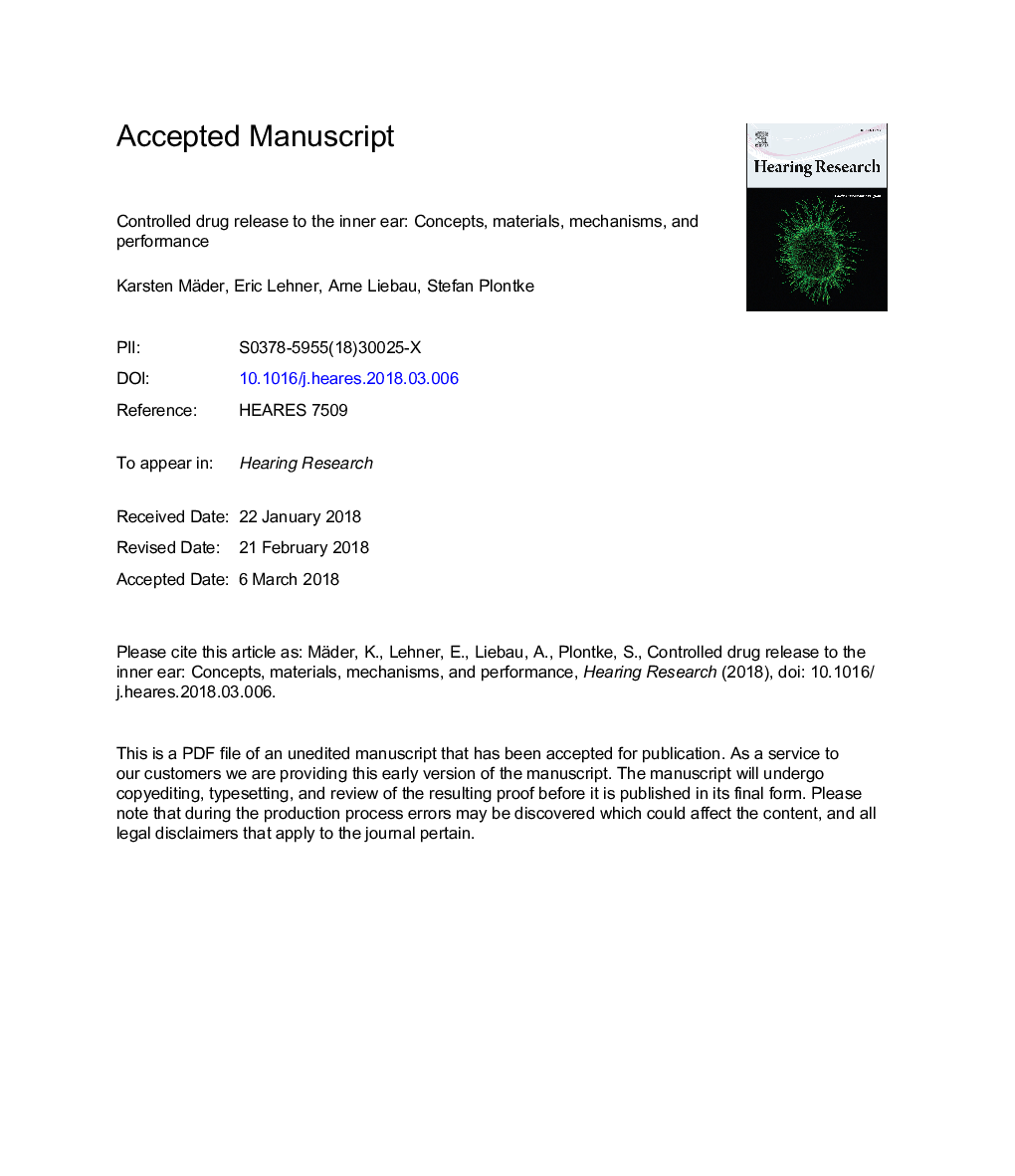| Article ID | Journal | Published Year | Pages | File Type |
|---|---|---|---|---|
| 11021804 | Hearing Research | 2018 | 40 Pages |
Abstract
Progress in drug delivery to the ear has been achieved over the last few years. This review illustrates the main mechanisms of controlled drug release and the resulting geometry- and size-dependent release kinetics. The potency, physicochemical properties, and stability of the drug molecules are key parameters for designing the most suitable drug delivery system. The most important drug delivery systems for the inner ear include solid foams, hydrogels, and different nanoscale drug delivery systems (e.g., nanoparticles, liposomes, lipid nanocapsules, polymersomes). Their main characteristics (i.e., general structure and materials) are discussed, with special attention given to underlining the link between the physicochemical properties (e.g., surface areas, glass transition temperature, microviscosity, size, and shape) and release kinetics. An appropriate characterization of the drug, the excipients used, and the formulated drug delivery systems is necessary to achieve a deeper understanding of the release process and decrease variability originating from the drug delivery system. This task cannot be solved by otologists alone. The interdisciplinary cooperation between otology/neurotology, pharmaceutics, physics, and other disciplines will result in improved drug delivery systems for the inner ear.
Related Topics
Life Sciences
Neuroscience
Sensory Systems
Authors
Karsten Mäder, Eric Lehner, Arne Liebau, Stefan K. Plontke,
